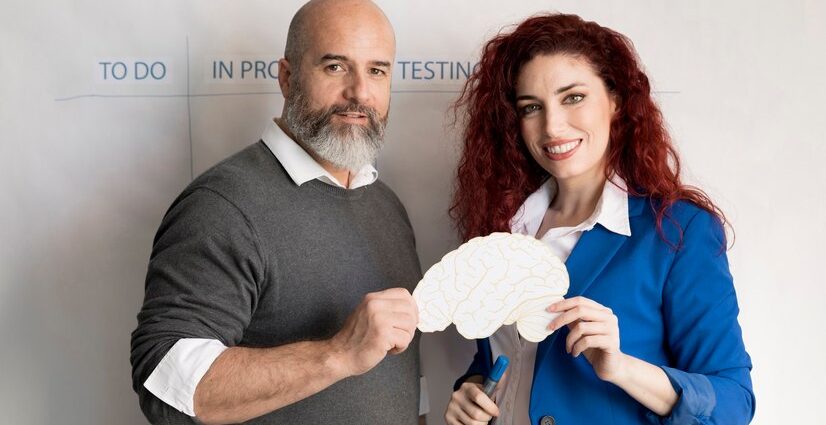For humans, practicing generosity is pleasurable on most occasions . In fact, it seems that the main reason why people are generous with others is that it makes us feel good. The feeling produced by acts of generosity has been called by experts the warm glow effect. This describes the pleasurable feeling we get from helping others.
Recent research has delved deeper into how generosity affects different aspects of our well-being. For example, one such study published in the journal Nature Communications showed that generosity makes us happier and confirmed this by highlighting the brain regions involved.
But does it matter who we help? Is there a difference between helping someone close to us or someone we don’t know? Can different forms of generosity improve our health?
A new study by researchers at the University of Pittsburgh in Pennsylvania has for the first time ranked different forms of generosity and investigated the effects these different forms of generosity have on the brain . The results have been published in the journal Psychosomatic Medicine: Journal of Biobehavioral Medicine.
Targeted and non-targeted support
Researchers distinguish between two forms of generosity: ‘directed’ support and ‘undirected’ support. Providing directed support involves helping someone directly, such as lending money to a friend or family member. Providing undirected support means helping a social or general cause, such as donating money to charity.
According to this study, providing ‘directed’ social support to others in need activates brain regions involved in parental caregiving. In contrast, providing ‘non-directed’ support does not have the same neurobiological effects.
This may help researchers understand the positive health effects of social ties . The researchers say the study’s results highlight the unique benefits of providing targeted support and elucidate the neural pathways through which providing support can lead to health.
Generosity reduces amygdala activity
The researchers conducted a pair of experiments to assess brain responses to providing different types of social support.
In the first study, 45 volunteers performed a ‘support giving’ task in which they had the chance to earn rewards for someone close to them who needed money (targeted support or targeted support), for charity (non-targeted support), or for themselves. As the researchers expected,los participantes se sentían más conectados socialmente y sentían que su apoyo era más efectivo cuando brindaban apoyo social específico (dirigido).
Subjects then underwent an emotional identification task that included a functional MRI scan to assess activation of specific brain areas when providing social support. Providing support, regardless of who received the support, was associated with increased activation of the ventral striatum and septal area, dos regiones previamente vinculadas a los comportamientos de cuidado de los padres en los animales.
However, higher activation of the septal area was only associated with lower activity in a brain structure called the amygdala , sometimes linked to fear and stress responses , when people provided specific support.
In the second study, 382 participants provided information about their supportive behavior (prosocial behavior) and underwent a different emotional identification task using functional magnetic resonance imaging. Again, those who reported providing more specific support also showed reduced activity in the amygdala.
In both studies, providing non-directed support (such as donating to charities) was not related to amygdala activity.
Targeted support has unique health benefits
The results suggest that offering targeted support may provide a unique health benefit by reducing anxiety and stress . According to the study’s authors, humans thrive on social connections and benefit when they act in the service of others’ well-being.
In a previous study, the same researchers found that providing social support has positive effects on areas of the brain involved in stress and reward responses . That study suggested that providing support, not just receiving it, may be an important contributor to the physical and mental health benefits of social support .
The new study adds further evidence that providing targeted support may be uniquely beneficial. Both targeted and undirected support are linked to increased septal area activity, supporting the ‘warm glow’ theory experienced when providing support: we help others, directly or indirectly, simply because it makes us feel good.
New neural pathway: targeted generosity improves health
Researchers say the link between increased activation of the septal area and decreased activity of the amygdala suggests a neural pathway . Through this neural pathway, “support provision ultimately influences health, which is specific to specific forms of targeted support, such as donating to specific people we know are in need.”
They also note that their study cannot identify cause and effect of providing support for septal area or amygdala activation . Furthermore, they say that providing targeted social support does not always lead to better health. For example, prolonged caregiving for a sick family member can be detrimental to health.
The study adds to previous evidence supporting the idea that providing social support to others may be an often-overlooked factor in the well-known link between social ties and health. “Giving specific support to an identifiable person in need is uniquely associated with reduced amygdala activity, thereby contributing to understanding how and when providing support may lead to health ,” the researchers conclude.
All sources cited were thoroughly reviewed by our team to ensure their quality, reliability, timeliness and validity. The bibliography of this article was considered reliable and of academic or scientific accuracy.
- Inagaki, T., and Ross, L. (2018). Neural Correlates of Giving Social Support. Psychosomatic Medicine , 1. doi: 10.1097/psy.0000000000000623
- Park, S., Kahnt, T., Dogan, A., Strang, S., Fehr, E., and Tobler, P. (2017). A neural link between generosity and happiness. Nature Communications , 8 , 15964. doi: 10.1038/ncomms15964
